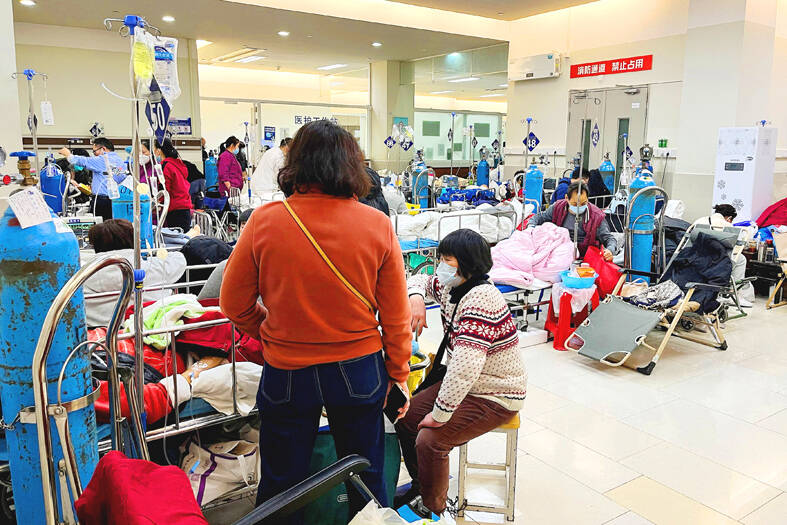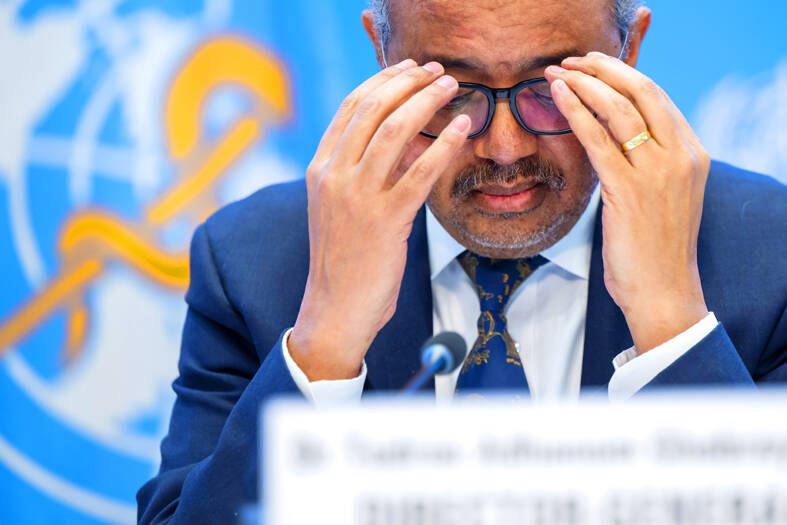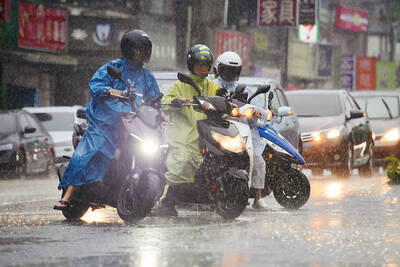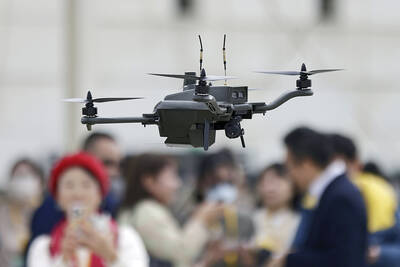The WHO yesterday appealed to China to keep releasing information about its wave of COVID-19 infections after Beijing on Saturday announced nearly 60,000 deaths since early last month, following weeks of complaints it was failing to tell the world what was happening.
The announcement was the first official death toll since the Chinese Communist Party abruptly dropped its “zero COVID-19” policy despite a surge in infections that flooded hospitals.
That left the WHO and other governments appealing for information, while Taiwan, the US, South Korea, Japan and others imposed controls on visitors from China.

Photo: REUTERS
The Chinese government said 5,503 people died of respiratory failure caused by COVID-19, and there were 54,435 fatalities from cancer, heart disease and other ailments combined with COVID-19 from Dec. 8 to Thursday.
The announcement “allows for a better understanding of the epidemiological situation,” a WHO statement said.
It said WHO Director-General Tedros Adhanom Ghebreyesus talked by telephone with Chinese National Health Commission Minister Ma Xiaowei (馬曉偉).

Photo: EPA-EFE
The “WHO requested that this type of detailed information continued to be shared with us and the public,” the agency said.
The National Health Commission said only deaths in hospitals were counted, which means anyone who died at home would not be included. It gave no indication when or whether it might release updated numbers.
A Chinese health official said the “national emergency peak has passed,” based on an 83 percent decline in the daily number of people going to fever clinics from a high on Dec. 23.
The report would more than double China’s official COVID-19 death toll to 10,775 since the virus was first detected in the central city of Wuhan in late 2019.
China has counted only deaths from pneumonia or respiratory failure in its official toll, which excludes many fatalities that would be attributed to the virus in other countries.
Meanwhile, high-speed train service yesterday resumed between Hong Kong and mainland China.
China also reopened a border crossing with Myanmar that is vital to the Southeast Asian nation’s trade, after years of a pandemic-prompted closure.
COVID-19 shuttered the Muse-Ruili checkpoint — among Myanmar’s busiest — in April 2020.
However, a Burmese official said that “China only allowed us to export food and drink at the moment.”
ARRIVALS IN TAIWAN
In Taipei yesterday, Centers for Disease Control Deputy Director-General Chuang Jen-hsiang (莊人祥), who is the Central Epidemic Command Center’s (CECC) spokesman, said the center would continue to implement quarantine and other pandemic response measures for people arriving from China.
This would include testing and isolation for those who test positive, he said.
Meanwhile, 201 arrivals from China tested positive for COVID-19 at Taiwanese airports on Friday, CECC data showed.
With 2,461 people arriving and undergoing mandatory testing, the test positivity rate was 8.2 percent, the data showed.
Sixty-eight people arrived via ferry in Kinmen County from China that day and one tested positive, resulting in a test positivity rate of 1.5 percent, the data showed.
From Jan. 1 to Friday, 17,120 travelers arrived from China and 2,696 tested positive, resulting in a test positivity rate of 15.7 percent, it showed.
Additional reporting by Lin Hui-chin

The combined effect of the monsoon, the outer rim of Typhoon Fengshen and a low-pressure system is expected to bring significant rainfall this week to various parts of the nation, the Central Weather Administration (CWA) said. The heaviest rain is expected to occur today and tomorrow, with torrential rain expected in Keelung’s north coast, Yilan and the mountainous regions of Taipei and New Taipei City, the CWA said. Rivers could rise rapidly, and residents should stay away from riverbanks and avoid going to the mountains or engaging in water activities, it said. Scattered showers are expected today in central and

COOPERATION: Taiwan is aligning closely with US strategic objectives on various matters, including China’s rare earths restrictions, the Ministry of Foreign Affairs said Taiwan could deal with China’s tightened export controls on rare earth metals by turning to “urban mining,” a researcher said yesterday. Rare earth metals, which are used in semiconductors and other electronic components, could be recovered from industrial or electronic waste to reduce reliance on imports, National Cheng Kung University Department of Resources Engineering professor Lee Cheng-han (李政翰) said. Despite their name, rare earth elements are not actually rare — their abundance in the Earth’s crust is relatively high, but they are dispersed, making extraction and refining energy-intensive and environmentally damaging, he said, adding that many countries have opted to

FORCED LABOR: A US court listed three Taiwanese and nine firms based in Taiwan in its indictment, with eight of the companies registered at the same address Nine companies registered in Taiwan, as well as three Taiwanese, on Tuesday were named by the US Department of the Treasury’s Office of Foreign Assets Control (OFAC) as Specially Designated Nationals (SDNs) as a result of a US federal court indictment. The indictment unsealed at the federal court in Brooklyn, New York, said that Chen Zhi (陳志), a dual Cambodian-British national, is being indicted for fraud conspiracy, money laundering and overseeing Prince Holding Group’s forced-labor scam camps in Cambodia. At its peak, the company allegedly made US$30 million per day, court documents showed. The US government has seized Chen’s noncustodial wallet, which contains

SUPPLY CHAIN: Taiwan’s advantages in the drone industry include rapid production capacity that is independent of Chinese-made parts, the economic ministry said The Executive Yuan yesterday approved plans to invest NT$44.2 billion (US$1.44 billion) into domestic production of uncrewed aerial vehicles over the next six years, bringing Taiwan’s output value to more than NT$40 billion by 2030 and making the nation Asia’s democratic hub for the drone supply chain. The proposed budget has NT$33.8 billion in new allocations and NT$10.43 billion in existing funds, the Ministry of Economic Affairs said. Under the new development program, the public sector would purchase nearly 100,000 drones, of which 50,898 would be for civil and government use, while 48,750 would be for national defense, it said. The Ministry of